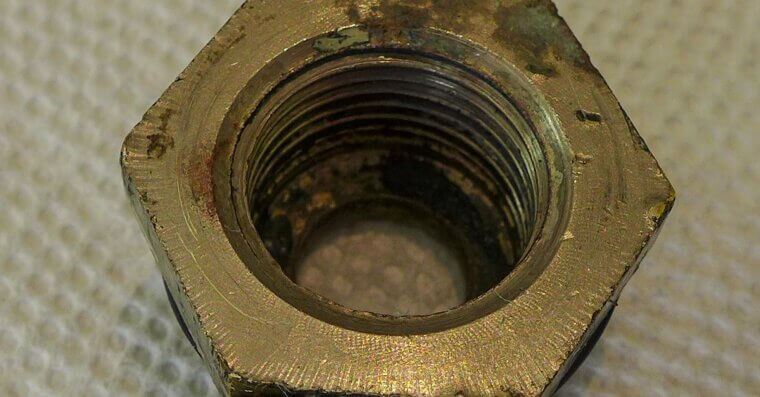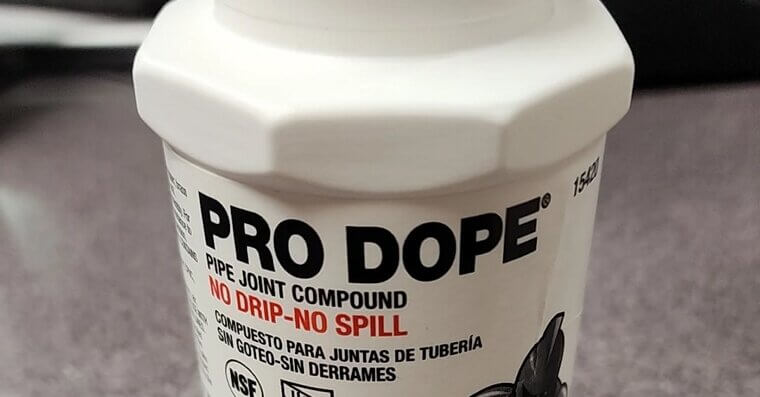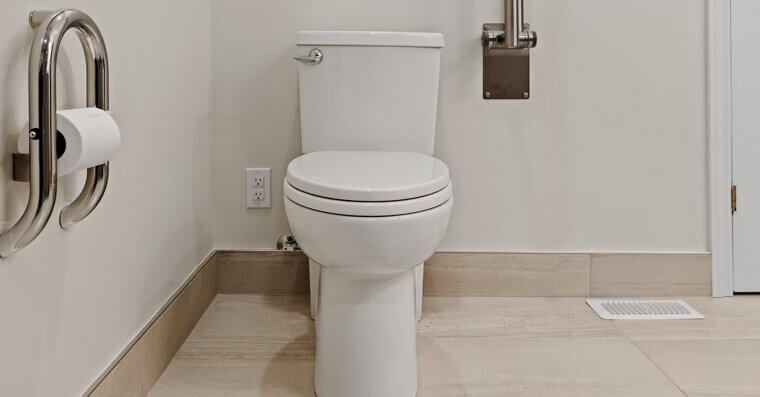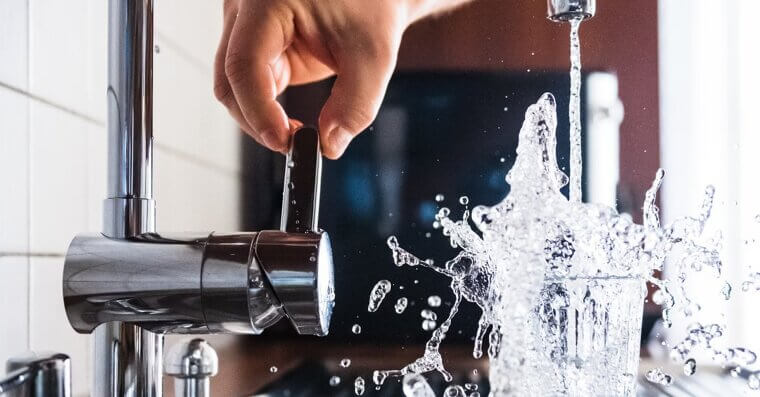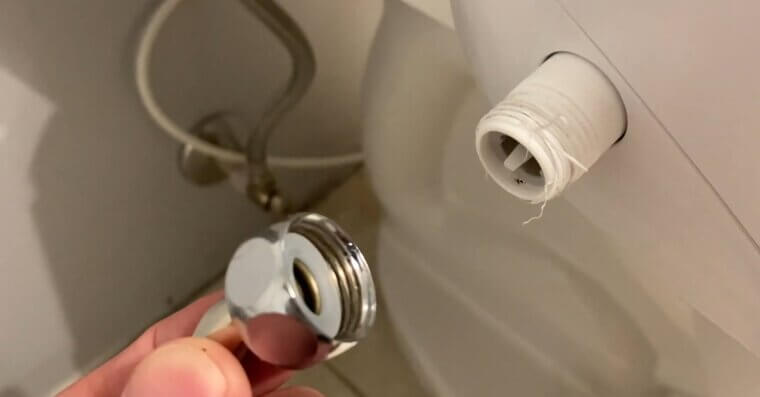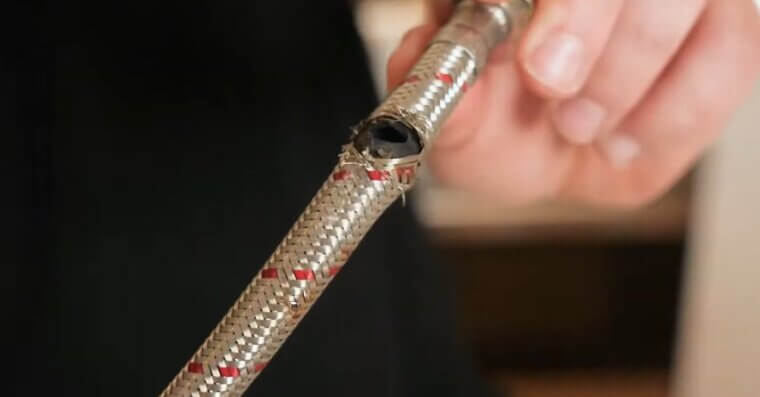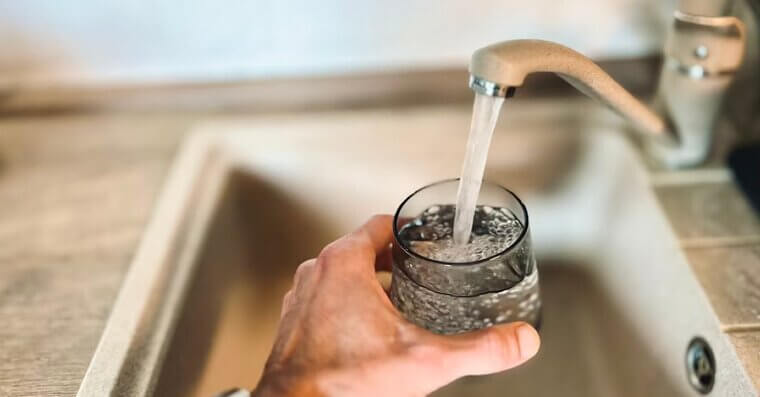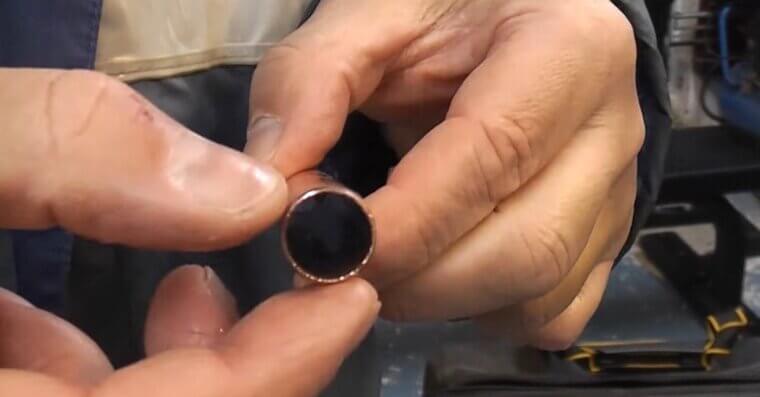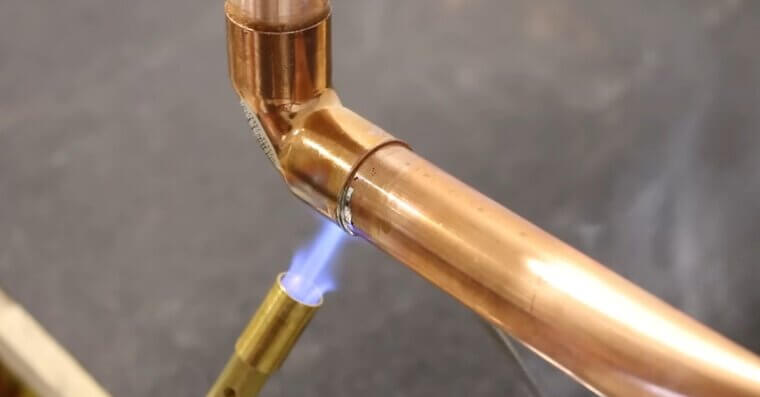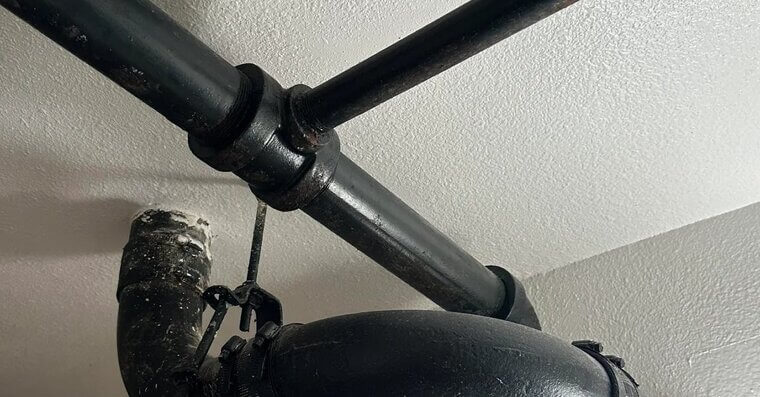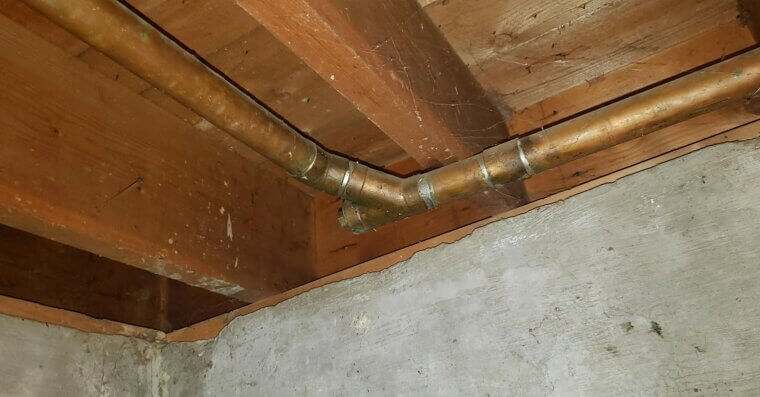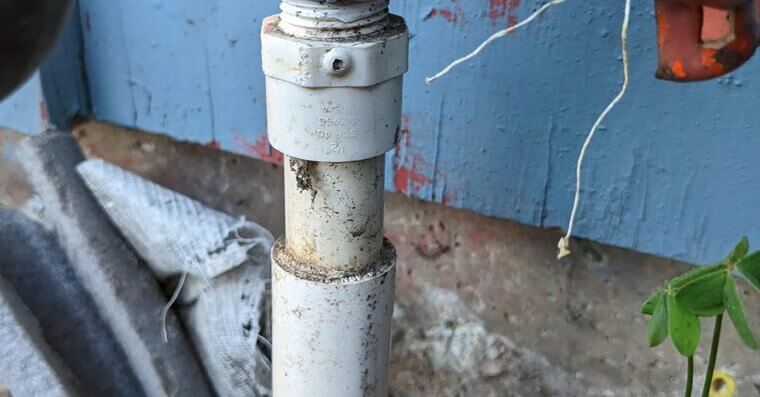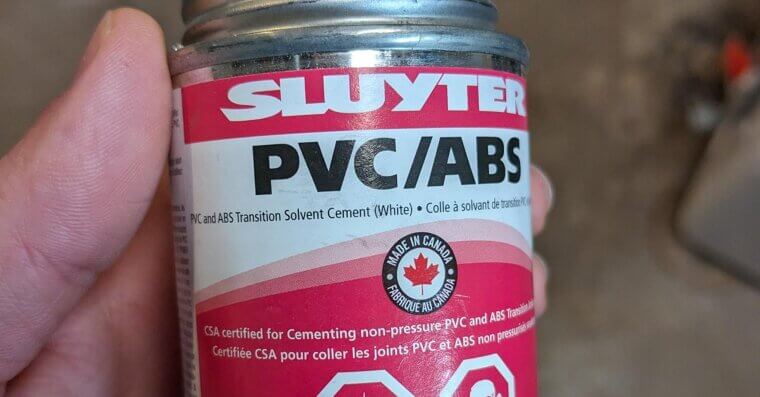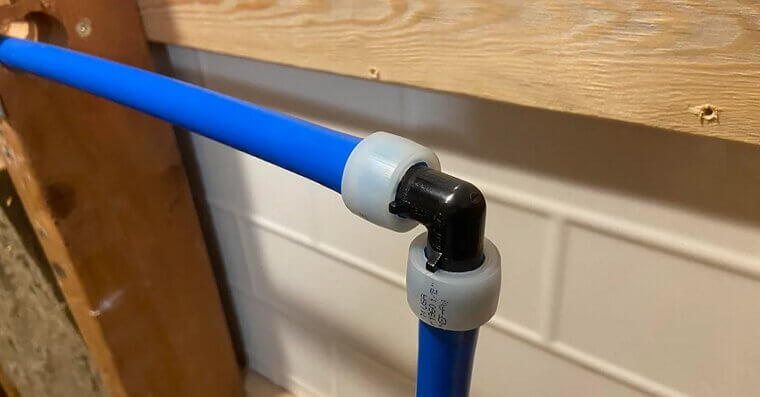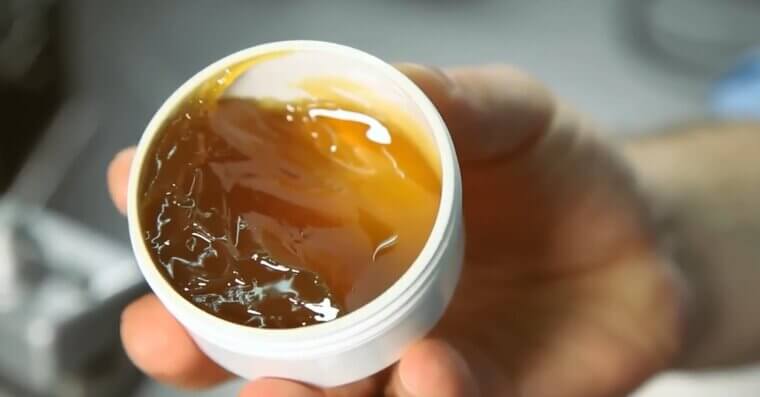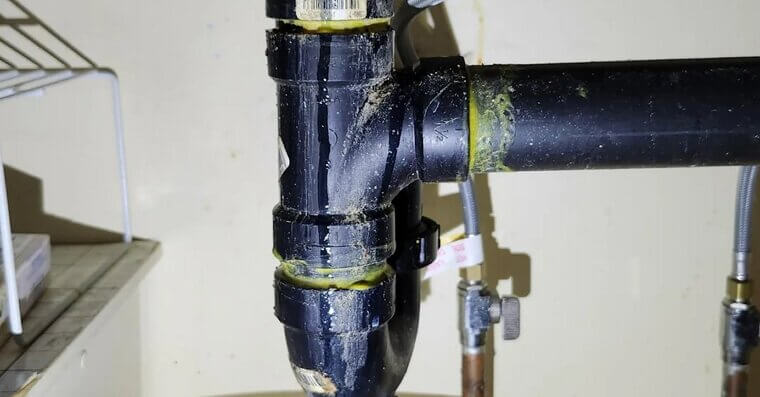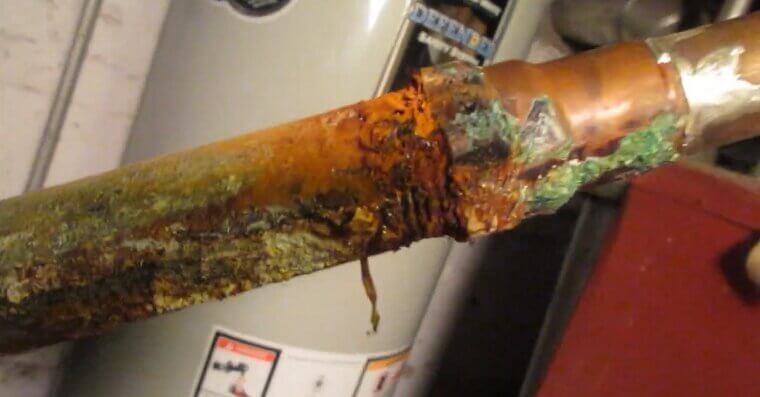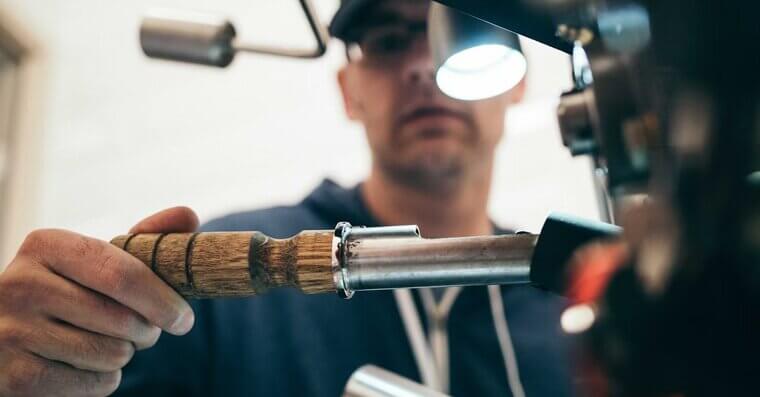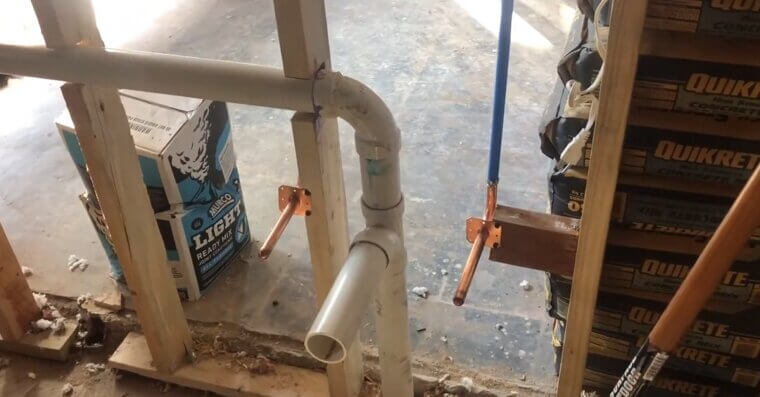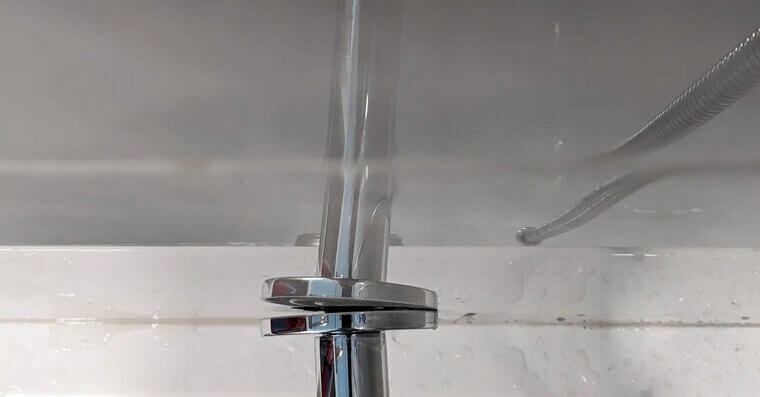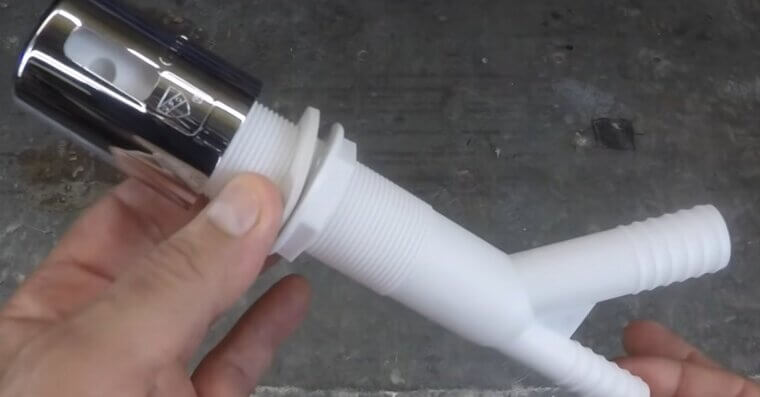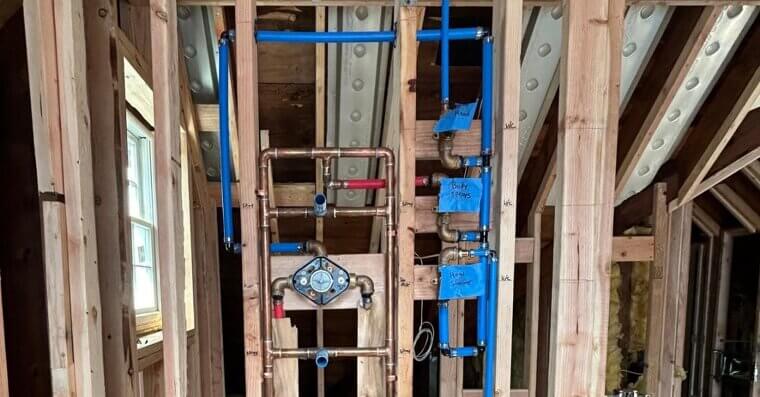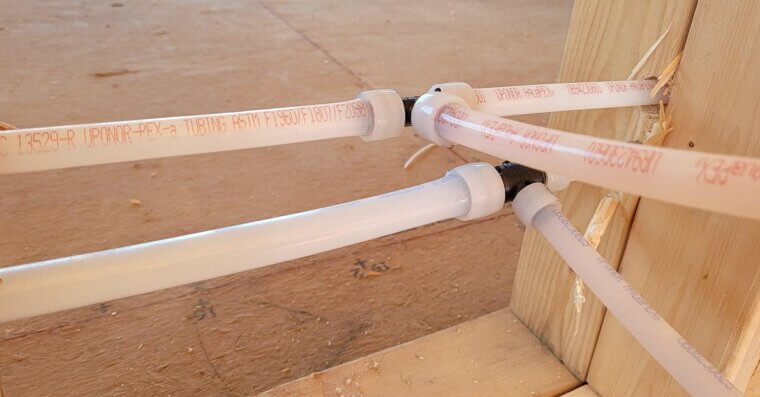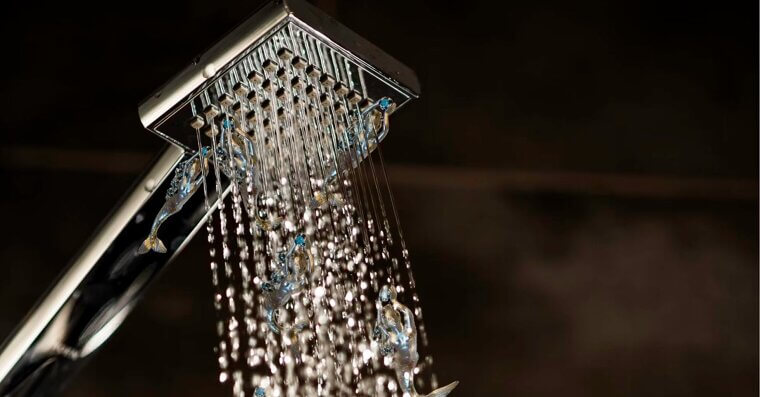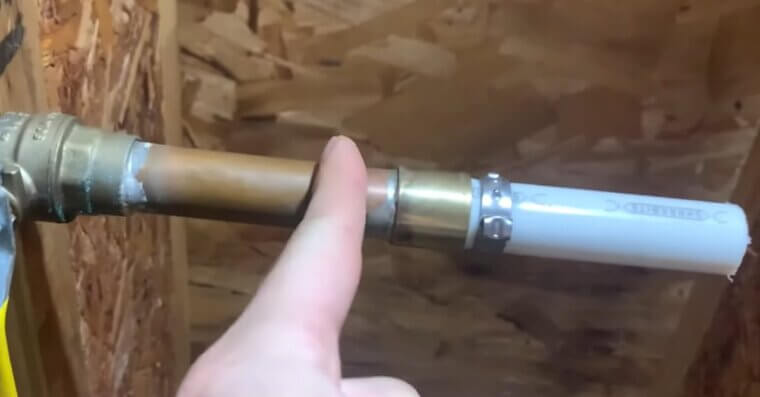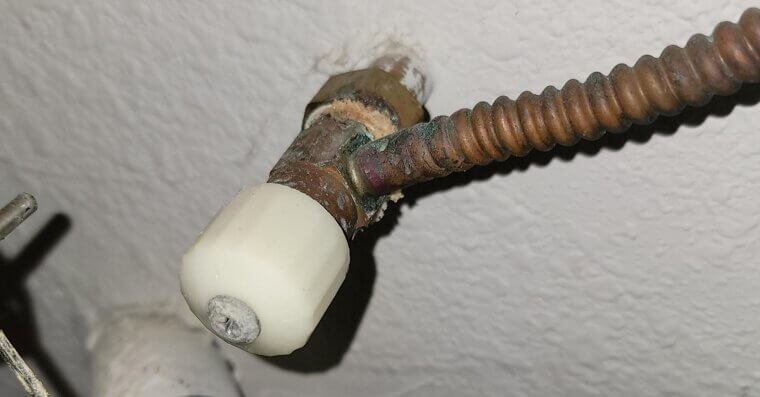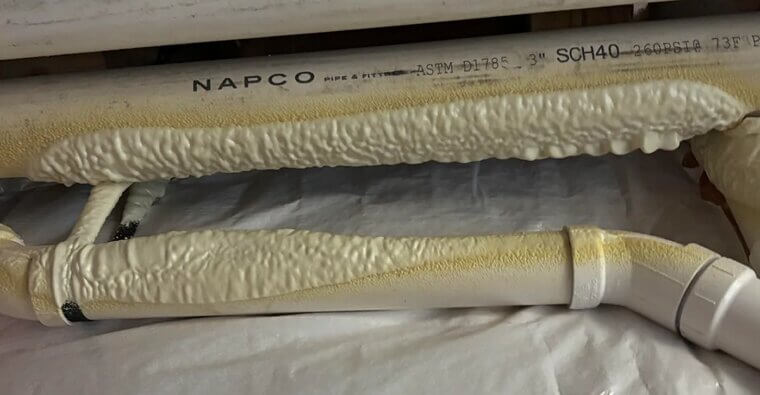Using Old Washers and Gaskets
Old washers harden and crack, causing slow leaks. Whenever you take apart a faucet or valve, replace washers and O-rings. They’re cheap, easy to buy from your local DIY store, and fresh rubber ensures a tight and drip-free seal.
Over-Tightening Fittings
It’s tempting to crank down on every fitting to make sure there’s no leak – but doing this can crack fittings, strip threads, or crush washers. Tighten just enough to stop leaks, then give it a small additional turn. If you hear creaking metal, you’ve gone too far.
Using the Wrong Tape or Sealant
Plumber’s tape (PTFE tape) and pipe dope aren’t interchangeable for every job. Teflon tape works great on threaded fittings, but not on compression or flare fittings. Likewise, some pipe dopes aren’t rated for certain plastics. Always read the label - using the wrong sealant can lead to leaks that show up weeks later.
Wrong Dope/Tape Order
Here’s an easy one to mess up: applying pipe dope over Teflon tape. The correct method is always tape first, dope second. The tape fills thread gaps, and the dope seals the surface.
Poorly Seated Toilets
If your toilet rocks or leaks at the base, it probably wasn’t seated evenly or has an old wax ring. Always ensure the flange is level and the ring is fresh. Fix this as soon as possible – your toilet is one of the most important things in the house!
Not Turning Off the Water
You’d think this one’s obvious, but plenty of DIYers make this huge mistake. The result? An accidental indoor fountain. Always locate and close the main shutoff valve - or at least the local supply line - before working on any fixture.
Not Installing Water Hammer Arrestors
If your pipes rattle or bang when you shut off a faucet, that’s water hammer. Ignoring it wears out fittings and valves over time. Installing a simple water hammer arrestor absorbs those pressure spikes and keeps your plumbing quiet and safe.
Cross-Threading a Pipe or Fitting
Cross-threading happens when threads don’t line up, and you force them together anyway. It feels tight - but it’s not sealing, and you’ve likely ruined both pieces. Always start by hand, feel for smooth threading, then tighten gently with a wrench.
Reusing Flexible Hoses
Flexible supply hoses may look fine as you go along, but reusing them after disconnecting is a bad idea. The rubber washers or braided steel can weaken or crack over time. Always replace flexible hoses when you install a new fixture. They’re cheap insurance against surprise leaks under your sink or behind your toilet.
Lead Solder on Potable Water Pipes
Using lead-based solder on drinking water lines is a big no-no. Lead can leach into the water and cause serious health problems. Always use lead-free solder and flux labeled as safe for potable water. It’s required by code, and it keeps your home’s water safe to drink and cook with.
Not Deburring the Inside of Pipes
After cutting copper or PVC, you’ll often have a rough inside edge. Skipping the deburring step can cause turbulence, leaks, or even cut into O-rings inside fittings. Luckily, a simple reaming tool smooths it out in seconds.
Dirty Pipes and Contaminated Flux
If you don’t clean the pipe ends before soldering, or you use dirty flux, the joint won’t bond properly. Dirt and corrosion prevent the solder from adhering evenly. Always scrub the pipe and fitting with emery cloth or a brush, apply fresh flux, and solder right away.
Not Supporting Pipes Adequately
Unsupported pipes will sag and eventually leak from stress. Water lines need proper hangers or straps every few feet, especially horizontal runs. This prevents strain on joints and fittings. PVC, copper, and PEX all expand differently with temperature, so support them according to manufacturer spacing recommendations.
Forgetting Pipe Slope on Drains
Drain pipes need a slight downward slope - usually about ¼ inch per foot—for gravity to do its job. Too flat, and waste doesn’t move. Too steep, and water outruns solids, leading to clogs. Always check slope with a level before securing the pipe.
Mixing Up PVC and CPVC
PVC is for cold water and drain lines, while CPVC handles hot water. Mixing them up can cause softened joints, leaks, or even burst pipes under heat. The fittings and glues aren’t compatible either. Always double-check pipe markings before gluing - white is usually PVC, beige or cream is CPVC.
Using the Wrong Glue
PVC cement and CPVC cement aren’t interchangeable. Each is formulated for specific materials and temperature tolerances. Using the wrong glue might seem fine at first, but it can fail later under pressure or heat. Always match your primer and cement to the pipe type and follow the instructions on the label.
Ignoring Expansion and Contraction
PEX and PVC expand when hot water flows through them. Without room to move, they can warp or crack fittings. Leave small expansion gaps and avoid overtightening clamps. For copper, use loops or flexible joints to absorb movement.
Using Too Much Flux
More isn’t better. Excess flux can melt inside the pipe and cause corrosion over time. A thin, even layer is all you need. Wipe off any residue after soldering, too. It’s not just about neatness - it keeps your pipes cleaner and helps avoid premature failure.
Forgetting to Prime PVC Joints
Primer softens the plastic so the cement can properly weld the two parts together. Skipping primer might save time, but you’ll likely end up with weak joints that leak later. Always use purple primer - it’s code-approved and easy to see that you didn’t skip the step.
Overusing Plumber’s Putty
Plumber’s putty is handy for sealing drains and fixtures, but it’s not meant for threaded joints or plastic fittings. It can damage rubber seals or cause slippage. Use it only where recommended, and reach for silicone sealant or gaskets when the manufacturer calls for them instead.
Using Galvanized and Copper Together
When galvanized steel and copper touch, they create a reaction that corrodes the metal. Always use a dielectric union when joining the two. It keeps dissimilar metals from eating each other away, which can save you from future leaks and rusty water.
Ignoring Local Codes
Every region in the world has its own plumbing codes for good reasons - safety and reliability. Ignoring them can mean leaks, fines, or failed inspections. Always check local requirements before starting a project.
Forgetting to Test for Leaks
Finishing a job and skipping the pressure test is asking for trouble. Always run water or use air pressure to check for leaks before closing walls or covering pipes. A few extra minutes can prevent days of drywall repair later.
Overlooking Venting Requirements
Drains need venting to allow air in and keep water flowing smoothly. Without proper venting, you’ll get slow drains or gurgling sinks. Make sure every fixture ties into a vent stack - or use an air admittance valve if allowed by code.
Using the Wrong Pipe Size
Using smaller pipes than needed can reduce pressure or cause slow drainage. Always match the pipe diameter to the fixture’s requirement. Undersized lines make showers weak and drains sluggish. When in doubt, follow code tables for correct sizing.
Poor Fixture Alignment
Crooked faucets or misaligned valves don’t just look bad - they can also cause leaks over time. Take your time to center fixtures and use levels before tightening connections. A little precision makes your installation look professional and last longer.
Forgetting Air Gaps on Dishwashers
An air gap prevents dirty sink water from siphoning back into your dishwasher. Skipping it can cause contamination and foul smells. Some areas require them by code, so always install one or use a high-loop connection if permitted.
Not Labeling Shutoff Valves
In an emergency, you don’t want to guess which valve controls what. Label each shutoff clearly - sink, toilet, washing machine, etc. It doesn’t take long and it makes maintenance (and panic moments) a lot smoother.
Using Drain Cleaners Too Often
Liquid drain cleaners seem pretty handy, and everyone seems to use them, but they can corrode pipes and damage seals. If you have recurring clogs, it’s better to use a drain snake or clean the trap. Use chemical cleaners as a last resort only.
Forgetting to Flush New Pipes
After soldering or gluing, debris and residue can linger in new pipes. Always flush the system thoroughly before using the water. It keeps valves, aerators, and appliances from clogging up and keeps your water safe.
Using Too Much Pressure
High water pressure feels great in the shower, but it’s hard on your plumbing. Pipes, fittings, and appliances wear out faster under constant stress. Use a pressure gauge to check your home’s PSI - it should stay between 40 and 60. Anything higher can cause leaks or burst hoses. If it’s too high, install a pressure regulator to protect your entire plumbing system.
Neglecting to Cap Open Pipes
If you pause a project, always cap any open pipes. Dust, insects, or debris can easily get in and cause future blockages. It’s a simple precaution that prevents contamination and frustration later.
Misaligned Compression Fittings
Compression fittings only seal properly when the pipe slides in straight and snug. If it’s even slightly crooked, the brass ferrule can’t seat evenly, and you’ll get a slow, sneaky leak. Always start by hand-tightening, making sure the pipe is perfectly aligned. Once it’s seated correctly, give it a gentle wrench turn - just enough to secure the seal without crushing it.
Using Non-Potable Pipe for Drinking Water
Not all pipes are safe for drinking water. Some older or off-brand flexible tubing can leach chemicals or leave a plastic taste. Always look for “NSF-61” or “drinking water safe” labels on the packaging. It’s especially important for kitchen and bathroom lines – you really don’t want to put dangerous chemicals into your body.
Forgetting Insulation on Cold Lines
Cold water pipes can “sweat” when humid air hits them, creating condensation that drips onto floors or that all-important insulation. Over time, that moisture can lead to mold and corrosion. The fix is simple - cover exposed cold lines in foam insulation. It keeps condensation under control, prevents rust, and even helps avoid those annoying dripping noises in the summer.

